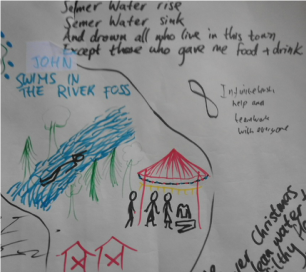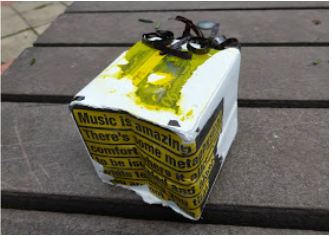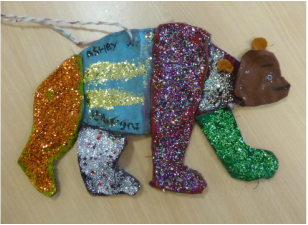Maple House
The SettingMaple House* is a residential unit for up to 16 adolescents experiencing acute mental health problems. Young people, suffering from conditions such as anorexia, self-harm, depression or schizophrenia, can stay for periods ranging from a few weeks to several months. The unit includes a school so they can continue their education, and a wide variety of therapeutic groups.
* pseudonym Starting PointGiven my university’s links with mental health service providers and users, it was natural that I should include a mental health setting in my practice research. I was intrigued also by the potential for ‘non-therapeutic’ storytelling in a therapeutic setting, and by the different perspectives on storytelling and life that young people with mental health difficulties might offer.
I was invited to lead a trial workshop at Maple House in early 2014. A diverse group of teenagers, some reticent but others lively and wielding their knitting, assembled around a table. I laid out a big sheet of paper and some pastels for doodling purposes. After some introductions and name games, I made several attempts to begin the story I had prepared, but its theme (of seals) triggered off both fond and hilarious memories of pets and other animals in some of the young people. When silence fell, I shyly offered again to share my story, and was given permission. After I’d told it the paper was full of big-eyed seals, intricate wave designs, and other animals. I suggested we use these as the subjects of a chain story, which took several surreal turns after some surprisingly lewd contributions from the apparently most withdrawn member of the group. Mercifully unabashed, the staff invited me to return a few weeks later. DevelopmentsAfter some months, I was invited to contribute a regular weekly session, which I continued until spring 2016. Rather than being located as ‘therapeutic groups’, they were conducted during school time, and often supported by the setting’s two teachers (both as co-facilitators and as critical friends). With a constantly shifting population of young people, each of whom was subject to changing moods and states of health, these sessions never became predictable. Each needed to function as a stand-alone workshop, and yet it was vital to respond to the interests, talents or challenges expressed by the young people in previous weeks. Attendance fluctuated wildly, as did enthusiasm.
It is difficult to chart a trajectory through this work, but I can trace certain phases, crises and forward movements: |
Endings and LearningsBy April 2016 when my work at Maple House concluded, for the time being, the teachers and I had begun to feel confidence in the shape of the ‘residency’, a shape dictated not by us as much as by the young people and the setting’s characteristics. We came to accept the impossibility of finding a ‘method’ which worked for all or even most of the young people; rather it was important to remain alert to the interests and needs of the young people present at any one time, and the different ways they felt able or willing to engage in sessions. Through experimentation with, and reflection on, many different approaches, we gained a better understanding of how ‘non-therapeutic’ storytelling could benefit young people in a setting dedicated to therapy.
|
Pathways for Discussion
|
Stories of practice:
|
| |||||||||||||||||||||


